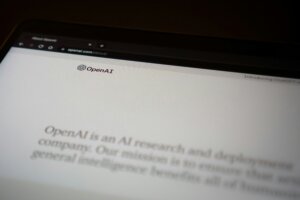OpenAI has once again pushed the boundaries of artificial intelligence with the introduction of its latest model, dubbed “o1.” This advanced AI model is not only an evolution in terms of processing power and learning capacity but also a step forward in a realm that has long eluded artificial intelligence: human-like reasoning. The claim that this model can reason like a human opens up new possibilities for AI applications across industries, education, healthcare, and daily life. But what exactly does it mean for an AI to reason like a human? How does the “o1” model differ from its predecessors, and what are the implications of this development?
The Journey to Human-Like Reasoning in AI
Artificial intelligence has made incredible strides over the past decade, thanks in part to machine learning algorithms that enable models to recognize patterns and make decisions based on vast amounts of data. However, human reasoning is not purely pattern recognition or data-driven decision-making. It involves understanding context, recognizing nuance, and drawing conclusions based on abstract thinking rather than only empirical data.
Historically, AI models have excelled at tasks requiring brute computational power, such as image recognition, natural language processing, or playing complex games like chess or Go. Yet, they often falter when tasked with understanding complex moral dilemmas, navigating ambiguous situations, or handling questions that require deep contextual insight.
The introduction of the “o1” model signifies an effort to close this gap. By claiming that this model can reason like a human, OpenAI suggests that it has integrated new mechanisms that allow the AI to process and analyze data in ways that mimic the cognitive processes humans use when thinking critically or abstractly.
What Sets the “o1” Model Apart?
The “o1” model represents a major leap forward in several areas:
Contextual Understanding: One of the defining features of human reasoning is the ability to understand and analyze context. This includes grasping the nuance of a conversation, recognizing underlying motivations, and making inferences that go beyond surface-level information. The “o1” model is designed to better understand contextual data, meaning it can make more informed decisions when faced with ambiguous or incomplete information.
Dynamic Learning: Unlike previous models, which required continuous updates and retraining with new datasets, the “o1” model is capable of dynamic learning, adjusting and evolving based on its interactions and experiences. This allows it to fine-tune its reasoning abilities over time, much like a human would learn from their experiences.
Abstract Thinking: Human reasoning often involves drawing conclusions from abstract or hypothetical situations. This type of thinking goes beyond simple logic and pattern recognition, requiring the ability to mentally simulate outcomes and assess potential consequences. OpenAI claims that the “o1” model has enhanced capabilities for abstract reasoning, enabling it to approach problems with a higher degree of creativity and flexibility.
Ethical Decision-Making: One of the most significant challenges in AI development is ensuring that machines can make decisions that align with human ethical standards. OpenAI has worked to imbue the “o1” model with more advanced moral reasoning, allowing it to weigh ethical considerations in situations where human values might come into play. This development could be crucial in fields like autonomous vehicles, medical diagnosis, or legal systems, where moral and ethical decisions are often required.
Real-World Applications of the “o1” Model
The potential applications for the “o1” model are vast and varied, spanning multiple industries and use cases. Below are some of the key areas where the model’s human-like reasoning abilities could be transformative:
Healthcare:
-
- Medical diagnosis is not always clear-cut. In many cases, doctors rely on contextual clues, patient history, and nuanced symptoms to make informed decisions. The “o1” model, with its ability to understand and analyze complex data, could assist in diagnosing illnesses, recommending treatments, and even making ethical decisions regarding patient care.
Education:
-
- AI tutors and educational platforms are increasingly popular, but many fall short when it comes to adaptive learning. The “o1” model’s ability to reason like a human could revolutionize education by offering more personalized, context-aware guidance to students. Whether it’s assisting with homework, helping students think critically, or adapting lesson plans based on individual needs, the model’s capabilities would offer a far more tailored educational experience.
Customer Service:
-
- Current AI-driven customer service solutions often operate on pre-defined scripts and have limited problem-solving abilities. The “o1” model’s reasoning skills could enable more dynamic, flexible interactions with customers, offering more accurate, context-driven responses and solving problems in ways that go beyond simple algorithmic responses.
Legal Systems:
-
- Legal cases often require careful consideration of ethical implications, precedents, and nuanced details. The “o1” model could assist lawyers, judges, and legal scholars by offering deeper insights into case law, helping predict outcomes based on complex reasoning, and even assisting in moral decision-making where human values are essential.
Creative Industries:
-
- Creativity has long been considered a uniquely human trait. However, with the “o1” model’s enhanced abstract thinking and contextual understanding, it could potentially play a role in creative fields like writing, art, and design. By collaborating with humans, the model could offer new perspectives, generate ideas, and assist in the creative process in unprecedented ways.
Potential Concerns and Ethical Considerations
While the advancements in the “o1” model are undoubtedly exciting, they also raise important questions and concerns:
Over-Reliance on AI:
-
- As AI systems become more capable of human-like reasoning, there is a risk that people may over-rely on these models for decision-making in critical areas. Ensuring that humans remain in control and that AI serves as a tool rather than a decision-maker is a crucial ethical consideration.
Bias and Fairness:
-
- Even with advanced reasoning capabilities, AI models can still inherit biases present in the data they are trained on. OpenAI has stated its commitment to reducing bias in AI systems, but the challenge remains to ensure that the “o1” model makes fair and unbiased decisions, particularly in sensitive areas like hiring, criminal justice, and healthcare.
Transparency and Accountability:
-
- As AI becomes more autonomous, transparency about how decisions are made will be critical. OpenAI must ensure that the reasoning processes of the “o1” model are understandable and explainable, so humans can trust and verify its decisions.
Conclusion
The introduction of OpenAI’s “o1” model marks a significant milestone in the evolution of artificial intelligence. With claims of human-like reasoning abilities, the potential applications for this model are vast, spanning healthcare, education, customer service, law, and more. However, alongside the promise of such advanced AI comes the responsibility to ensure ethical use, transparency, and accountability.
While the “o1” model may not fully replicate human reasoning just yet, its development is a clear signal of what’s to come in the future of AI: systems that are not only capable of processing massive amounts of data but also of thinking, reasoning, and making decisions in ways that more closely resemble human cognition.
About The Author
Jana Legaspi
Jana Legaspi is a seasoned content creator, blogger, and PR specialist with over 5 years of experience in the multimedia field. With a sharp eye for detail and a passion for storytelling, Jana has successfully crafted engaging content across various platforms, from social media to websites and beyond. Her diverse skill set allows her to seamlessly navigate the ever-changing digital landscape, consistently delivering quality content that resonates with audiences.






